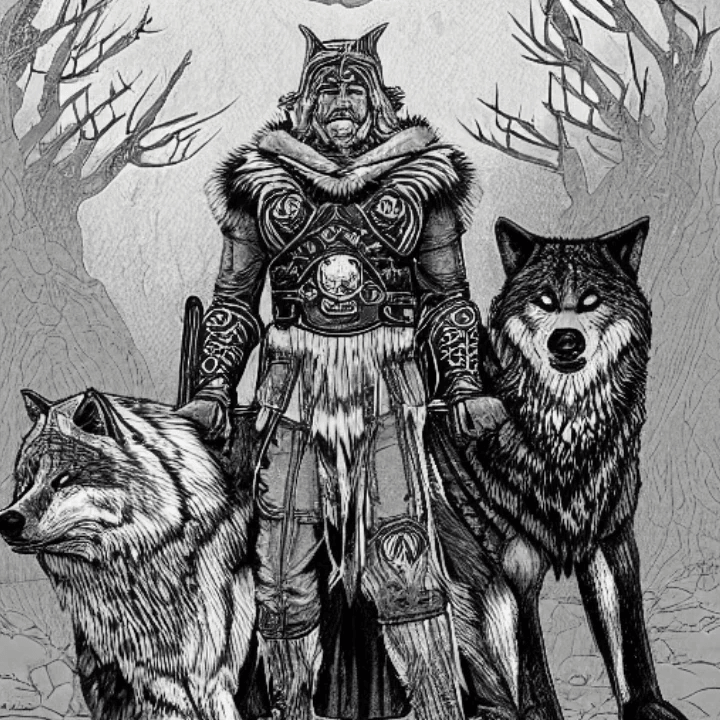Sleipnir: The Eight-Legged Horse of Norse Mythology
In Norse mythology, Sleipnir is the famous eight-legged horse of the god Odin. As one of the most iconic creatures of Norse mythos, Sleipnir has captured the imagination of people around the world. In this article, we will explore the fascinating history and tales behind Sleipnir and its significance in Norse folklore and beliefs.

The Significance of Sleipnir in Norse Mythology
According to Norse mythology, Sleipnir was born when the god Loki shape-shifted into a mare and mated with the giant stallion, Svadilfari. Sleipnir was born from this union, and it was said that he could outrun any creature, even across the sky and sea. As Odin's mount, Sleipnir played a vital role in many Norse myths and legends, serving as a symbol of strength, speed, and agility.
Sleipnir's importance in Norse mythology cannot be overstated. As Odin's mount, he played a crucial role in many myths and legends, including the story of the god's journey to the underworld. According to the myth, Odin rode Sleipnir to the land of the dead to seek the wisdom of the seeress, who lived there. This journey was perilous, and it was only with Sleipnir's speed and agility that Odin was able to navigate the treacherous terrain of the underworld.
Sleipnir's eight legs were said to represent the eight directions of the world: north, south, east, west, up, down, inside, and outside. This made Sleipnir an essential part of Odin's travels, allowing him to traverse the various realms of the Norse cosmos with ease. In Norse mythology, Sleipnir was also known to possess magical abilities, which made him almost invincible in battle. He was often depicted in Norse art and literature as a fierce and mighty creature, inspiring awe and fear in those who beheld him, and Sleipnir's image was often used as a symbol of power and invincibility.
The Myth of Giant Builder and Birth of Steed of Odin
The birth of Sleipnir was an unusual one, and it is described in the famous myth of the giant builder and the wall of Asgard. The myth tells of how the gods, with the help of a clever trick, were able to outwit the giant and complete the walls of their fortress, Asgard, and how Sleipnir came to be as a result of Loki’s trickery.
According to the myth, the giant approached the gods and offered to build a wall around Asgard in exchange for the goddess Freyja's hand in marriage and safety for the duration of his work. The gods hesitated, but were ultimately convinced by Loki to agree to the deal, but on the condition that the giant must complete the wall in a single winter with no help from anyone but his trusty stallion Svadilfari.

The giant, confident in his abilities, agreed to the deal and began to work on the wall. However, as the winter wore on, it became clear that the giant would be able to complete the wall on time with Svadilfari doing twice the work of the giant. The gods began to worry about what would happen if the giant were to marry Freyja and gain access to Asgard.
In their desperation, the gods turned on Loki for a solution threatening him with death for giving them such poor advice. Loki, always cunning and quick-witted, came up with a plan to help the gods out of their predicament. He transformed himself into a mare and lured the giant's powerful stallion away from the wall. This caused the stallion to run off after Loki, causing the giant waste time chasing after his beast of burden.
As the winter drew to a close, the giant was unable to complete the wall on time, and the gods claimed victory. However, the giant still demanded compensation for his failed work. The gods, unbound from their deal and promise, were not merciful – they deemed a blow from Thor’s hammer to be an appropriate payment for the unlucky giant.
Meanwhile, deep in the forest, the giant’s stallion Svadilfari caught up with Loki who was still shapeshifted into a mare. The two copulated, and soon after completion of the wall Loki gave birth to Sleipnir, the legendary eight-legged steed of Odin. Being the offspring of such an unusual union perfectly explains Sleipnir's mythical abilities and further exemplifies the consequences stemming from Loki's tricks.
With such incredible myths describing his being and abilities, Sleipnir is an iconic figure in Norse mythology, representing strength, speed, and agility. As Odin's mount, he played a crucial role in many myths and legends, helping the gods navigate the treacherous terrain of the Norse cosmos and outsmart their enemies. His eight legs and magical abilities made him a symbol of power and invincibility, inspiring awe and fear in those who encountered him. The legacy of Sleipnir lives on in modern times, inspiring artists, writers, and filmmakers to bring this legendary creature to life in new and exciting ways.


